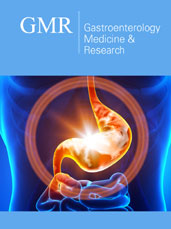- Submissions

Abstract
Gastroenterology Medicine & Research
The Influence of Controllable Factors on Successful Embryo Implantation After Transfer
-
Open or CloseBabenkov VYu*
Russian Federation, Belgorod, Russia
*Corresponding author:Babenkov VYu, Russian Federation, Belgorod, Russia
Submission: November 23, 2024;Published: December 02, 2024

ISSN 2637-7632Volume8 Issue1
Abstract
The introduction of reproductive technologies into production is a multi-stage and is a rather complicated process, therefore, in practice, specialists often encounter low-efficiency results. It is noted that for multiple embryo production, precise execution of technological techniques is necessary. At the same time, their successful transplantation largely depends on the professionalism of the performers. It has been noted that obtaining high-quality embryo products from a donor does not yet guarantee the successful production of offspring from a recipient. This is due to a complex of objective and subjective reasons, of which the factors that can be directly controlled by embryo transfer specialists deserve special attention. In the presented work, as a result of an analytical study, the main reasons for low results in the practice of transplantation of preimplantation embryos were studied to optimize the management of processes to improve the efficiency of applied use of reproductive technologies in cattle breeding. The significance of such factors as the readiness of the morphophysiological state of the recipient’s reproductive system for embryo implantation at the time of transplantation and the efficiency of estrous cycle synchronization systems was determined. Particular importance was given to the results of transplantation depending on the place of embryo application in the uterine horn, which is associated with the need for professional experience among specialists and is a significant threshold for limiting the level of embryo engraftment. In this regard, the effectiveness of using modified instruments for deep embryo application was noted. The dependence of the engraftment of depreserved embryos on the methods of cryo- and depreservation during non-surgical transfer to recipients was determined. In the overall analysis of our own research, morphological quality assessment was carried out on more than 12,000 embryos, of which about 8,000 underwent cryo- and deconservation procedures, and the total number of transplants of freshly obtained and frozen-thawed embryos amounted to more than 9,000, which together indicates the high significance of the results obtained.
Keywords:Reproductive system; Estrous cycle; Embryo; Transplantation; Synchronization; Engraftment; Implantation; Application site; Cryopreservation; Deconservation
 a Creative Commons Attribution 4.0 International License. Based on a work at www.crimsonpublishers.com.
Best viewed in
a Creative Commons Attribution 4.0 International License. Based on a work at www.crimsonpublishers.com.
Best viewed in 







.jpg)






























 Editorial Board Registrations
Editorial Board Registrations Submit your Article
Submit your Article Refer a Friend
Refer a Friend Advertise With Us
Advertise With Us
.jpg)






.jpg)














.bmp)
.jpg)
.png)
.jpg)










.jpg)






.png)

.png)



.png)






